Mushrooms have captured humanity’s attention for thousands of years. They appear in rock art, illuminated manuscripts, and more recently in plenty of 19th and early 20th century fairy illustrations.
And who can forget the mushrooms in Alice in Wonderland?
Fungi may have arrived on land some 700 million years ago. Scientists estimate there are anywhere between 2.2 and 3.8 million species, and we know fewer than 5% of them (Lawrence 2022: 26).
But we still don’t know as much about them as we do about plants.
They confuse us. Mushrooms spring up overnight, many of them are dangerous if you confuse them for their safer cousins, and they have an array of fantastical names. Witness the Destroying Angel, Spit Devil, Satan’s Bolete, Witches’ Butter, and Death Cap.
So let’s dig into some of their folklore!
What does fungi actually do?
In the West, it’s taken a long time for us to get to grips with fungi. The field of mycology is relatively new, compared to botany.
But fungi is an important part of any eco-system, especially in forests.
Fungi can connect with plant and tree roots via mycorrhizae. The plants and trees pass carbohydrates from photosynthesis to the fungi, and the fungi sends back water and nutrients (Lawrence 2022: 29). The mycellium of the fungi holds the soil together and distributes these nutrients – this is what people mean when they talk about the “wood wide web”. That said, it’s important to note that it’s incredibly difficult to study how that works in a actual forest. But it’s important to note that what we see of fungi is the fruit, which produces spores. The rest is often underground.
Their ability to break down organic compounds is what makes fungi so useful to any ecosystem. For example, bracket fungi are the only thing on earth that can break down lignin in trees. This makes those nutrients available for animals and insects, so it’s not locked away in wood (Lawrence 2022: 34).
And given our focus on forests, we’re not even going to get into the fungi like penicillin.
Mycophobic vs Mycophilic Nations
R Gordon Wasson and Valentina Pavlovna Wasson are some of the best known mycologists with an interest in the folklore of fungi. They noted “a deep repugnance for ‘toadstools’ among the folk that dwell around the shore of the North Sea” (1957: xvii). This gave rise to their theory that some countries distrusted and disliked mushrooms, making them mycophobic. Other countries, such as those in eastern Europe, Russia, China and Japan, were mycophilic, having a better understanding of and appreciation for mushrooms (1957: xvii).
So in mycophobic countries, people lumped mushrooms under the heading of ‘toadstools’ and assumed they were dangerous. Hence, less folklore. After all, if you’re just telling people to stay away from something, you won’t waste time coming up with stories for it.
Many early writers, including Aristotle, Pliny, and Plutarch, didn’t understand what fungus actually was (Lawrence 2022: 12). Of course, poor people would have known the value of fungi, but Western writers ignored it and it fell out of fashion in the West (Lawrence 2022: 13).
It’s worth pointing out that not every writer felt the same way. The 11th-century abbess and writer Hildegard of Bingen decided mushrooms on trees had to be either medicinal or edible (Lawrence 2022: 13). Jelly Ear, or Auricularia auricula-judae, shown below, is edible when cooked.
Mycophobia is a shame, given how fascinating some fungi are. As an example, in 1991, scientists found Cladosporium sphaerospermum thriving inside the melted Reactor No. 4 at the Chernobyl site. Turns out it’s a radiotropic fungus so it turns radiation into energy (Lawrence 2022: 153).
Toadstools?
Incidentally, linguists theorise that ‘toadstool’ originally came from the idea that frog or toads sat on, or under, the fungus. Similar names appear across England, Wales, Ireland, Norway, Germany, and the Netherlands (Inkwright 2021: 115). That’s despite the fact you never see toads near such mushrooms since they live in different habitats.
I live in England, and am more familiar with the folklore of northern Europe, so that’s what we’ll focus on. Where necessary, I’ve gone a bit wider. Though I encourage you to check out the books in the references section to discover the folklore from other regions! It’s a bigger topic than I can hope to cover, so don’t be disappointed if I don’t cover a particular type of fungus.
And this does not constitute a field guide so don’t use this as the basis of your foraging. If you don’t know what something is, don’t pick it.
Fly Agaric
If you say ‘toadstool’ to most people, they’ll picture a shiny red cap, studded with white dots, with a long white stalk. What they’re actually picturing is Amanita muscaria, better known as fly agaric. It grows in more temperate parts of the northern hemisphere and grows around pine and birch trees.
This link with pine trees could explain its bizarre association with Christmas in some places. Scandinavian Christmas cards might include fly agaric as a splash of colour, and tomte might use them either as seats or as houses (Lawrence 2022: 132).

Naturally, people have taken it a bit further and suggested that Father Christmas represents Siberian shamans, with his red and white suit coloured to suggest fly agaric. The flying reindeer? Off their faces on hallucinogens, obviously (Lawrence 2022: 132). Though it’s worth noting that reindeer do enjoy a spot of fly agaric.
Mushrooms have also been identified as petroglyphs and carvings on Bronze Age artifacts from Scandinavia. Reid W. Kaplan posits that these stylised mushroom motifs can be identified as fly agaric, suggesting the religious use of the mushroom in Scandinavia, much as is seen in Mesoamerica (1975: 76). Kaplan also notes that the Sami used fly agaric in shamanic rituals, and given its distribution in Scandinavia, it’s likely it was relatively abundant in the pine forests of the north (1975: 77).
There’s even a folk belief that fly agaric sprang up wherever foam from Sleipnir’s mouth landed during the Wild Hunt at the Winter Solstice (Inkwright 2021: 117). It took nine months to spring up (the mushrooms don’t appear until after August) because the earth was ‘pregnant’ with them.
Folk Names
As Sandra Lawrence points out, most of fly agaric’s folk names refer either to madness, flies, or diabolic possession (2022: 131). The flies link is oft-repeated, with various folk remedies cited that involved lacing something sweet with fly agaric and leaving it out to kill flies. Trouble is, it doesn’t actually work. Jean Baptiste Bulliard pointed this out in 1779 and called for its name to change, but people preferred the myth (Lawrence 2022: 131).
Still, its hallucinogenic properties are well documented. Some considered the fungus to be one of the ingredients of witches’ flying ointment, along with the likes of nightshade, mandrake, henbane and hemlock. Given the hallucinogenic nature of the plants, the ointment was more likely to produce the sensation of flying than actual flight. That said, its other symptoms include diarrhoea, vomiting, drowsiness, seizures, and death, so it’s not worth the risk (Lawrence 2022: 132).
Fly agaric was also known as ‘hexenpilz’, or witch mushroom in Austria (Lawrence 2022: 69). The mushrooms were also believed to grow around Baba Yaga’s house.

Famously, some believe the Norse Bezerkers ate Amanita muscaria before going into battle. This theory came from a Swedish priest, Samuel Ödmann, who wrote An Attempt to Explain the Berzerk-raging of Ancient Nordic Warriors Through Natural History. As the theory went, the Bezerkers would end up crazed and hallucinating as they rampaged towards their opponents. Trouble is, there’s no literary or archaeological evidence for it, so it can only ever be a theory – not proven fact (Lawrence 2022: 121).
Fez Inkwright also notes a belief that fly agaric might have inspired the redcap (2021: 118). Other than the literal red cap, I can’t really see any links between the two.
Common Puffball
The Lycoperdon perlatum is more commonly known as the common puffball. Its scientific name translates as ‘widespread wolf’s fart’. Similar folk names from France, Germany, and the Basque region translate to similar things. They form a large, ball-shaped fruit, which bursts open to disperse spores (Lawrence 2022: 76).

Over time, they’ve picked up various associations, with some thinking they came from Jupiter (the planet, not the god). Some used them as magical amulets, others used them as tinder to start fires, or dried them to use as incense to ward off evil spirits (Lawrence 2022: 76). In Ireland, people pressed the soft part of the common puffball against cuts to staunch the bleeding (Elms 2011).
Witch’s Butter
More often known as witch’s butter, Tremella Mesenterica is also known as yellow brain, golden jelly fungus, and yellow trembler. It starts out as bright yellow, before crusting over and turning dark orange.
At one stage, people believed the fungus appeared as a sign you’d been cursed by a witch if it was near your house. You could break the curse by pricking the lobes and letting any moisture out (Dartmoor Walks 2013). Or you could strike the fungus. If you used a blunt weapon, whoever cursed you would be maimed, and using a sharp weapon would kill the curser (Inkwright 2021: 119).
Others thought falling stars left the fungus in its wake (Lawrence 2022: 153).

In Sweden, people thought that the fungus appeared after trolls milked cows and splashed the butter during the churning process. The farmer threw the fungus into the fire on Midsummer Eve, so the troll would appear and apologise (Lawrence 2022: 153).
Accusers claimed Gwenllian David, accused of witchcraft in 1656, used witches’ butter for nefarious ends. The fungus grew on her doorpost and someone stuck a red-hot knife into it to prove her guilt. Struck by instant pain, the old woman suffered for two weeks before the villagers removed the knife. She apparently recovered immediately (Lawrence 2022: 153).
That one fascinates me, given the belief people thought the appearance of the fungus suggested you’d been cursed by a witch…not that you were a witch!
Common Stinkhorn
The common stinkhorn, or phallus impudicus, has become something of a celebrity online, most notably due to its appearance. Its name translates as ‘shameless penis’, which gives you an idea of what it looks like.
It’s also been called Satan’s member, devil’s horn, and devil’s stinkpot. It was believed to be either the result of a witch’s curse or sprang up on the spot where a sorcerer had relieved himself. Girls in the Ozarks considered it a good omen (Lawrence 2022: 70).

Not every country had lewd thoughts about it. In Germany, it’s called the leichenfinger, or corpse finger. People thought it looked like a dead body’s finger poking up through the ground (Lawrence 2022: 73).
The mushroom’s disgusting smell actually lures flies who eat the cap, where they pick up spores on their feet. When they land elsewhere, they distribute the spores. Yoruba hunters added common stinkhorn to an ointment to make them invisible to enemies, and this probably masked their smell, making hunting easier (Lawrence 2022: 73).
Fairy Rings
We can’t talk about fungi and not talk about fairy rings. They’re actually created when an underground fungus starts producing mushrooms. The mycellium grows outwards, taking nutrients from the soil, and pushing further out as it does so.
But because they pop up seemingly from nowhere, they’ve picked up a range of associations in folklore.
In the Netherlands, the Devil created fairy rings by splashing milk as he churned it. In Austria, a dragon’s tail scorched the earth and only mushrooms grew there. Germany, France and England thought fairy rings provided evidence of witches dancing. In Scandinavia, dancing elves were the culprits (Lawrence 2022: 52).
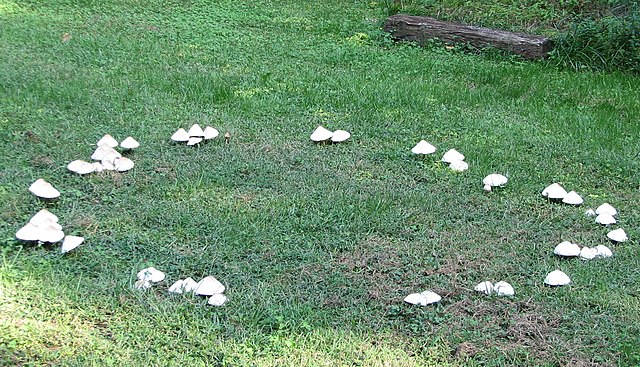
Meanwhile, in Ireland and Britain, some saw mushrooms as the seats for those tired from dancing with fairies (Lawrence 2022: 52).
Stepping into a fairy ring might mean you died young, went blind, lost an eye, became invisible to humans, or got captured by the fairies (Lawrence 2022: 52). In Wales, people might throw thyme and marjoram into a ring to confuse the fairies so they could rescue the trapped human. Otherwise, they might touch the trapped human with iron or rowan to break the enchantment (Lawrence 2022: 53).
Damaging a fairy ring would anger the fairies. In Worcestershire, even just kicking a mushroom could earn you seven years of bad luck. If you wanted to hear the fairies underground, you could run clockwise around the ring nine times. Rings might mark buried treasure, while collecting dew from inside the ring would improve the complexion (Lawrence 2022: 55).
There are various legends about animals refusing to venture inside, though this at least has a practical explanation. The mycellium within the ring can choke the grass so it turns dry. Meanwhile, the nutrients brought to the surface outside the ring makes the grass thicker, which could explain why animals preferred to eat it (Lawrence 2022: 56).
Lichen
If you’re wondering why I’ve included lichen in a post about fungi, then I have two reasons. First, lichen is a symbiotic partnership between fungi and algae. The algae produces sugar for the fungi through photosynthesis, and the fungi provides shelter for the algae. Second, lichen is so synonymous with woodland that it felt wrong to leave them out during my Forest Folklore theme.
Lichen is an amazing indicator of good air quality since it can’t stand air pollution. Lichen can actually grow anywhere, including on cars. People in Shetland, the Hebrides, Wales, and on Dartmoor would scrape lichen from rocks and boil it in cauldrons to make fabric dyes (Lawrence 2022: 36).
Old Man’s Beard
One of the most well-known lichen is Old Man’s Beard, from the Usnea genus. It lives on trees, but takes nothing actually from the tree, which is why you sometimes see it on dead trees. Instead, the fungal spores land on the bark, and once it’s taken hold, it spins sets to grab nutrients and moisture from the air. Over the years, it’s also been called Merlin’s Beard, Apothecary’s Beard, and Witches’ Whiskers.
It produces usnic acid, which has antifungal and antibiotic properties, so people once used it for bandages before gauze became plentiful (Dartmoor Walks 2013).

According to the Doctrine of Signatures, Usnea was good for dandruff, leprosy, and scalp problems. Lobario pulmonaria, or lungwort, looked like diseased lungs, so people used it for respiratory conditions (Lawrence 2022: 36).
Another lichen from the Parmelia family is often called crottle, or skull lichen. People once considered it a treatment for epilepsy. The catch? You needed to find it growing on an old skull. The best of all grew on the skulls of executed criminals (Dartmoor Walks 2013).
General Fungi Lore
In the ancient world, people believed that mushrooms appeared after thunderstorms. In Egypt, this made them a gift from storm god Set, and only the pharaohs could eat them. Greeks thought Zeus threw mushroom seeds to earth during thunderstorms (Lawrence 2022: 10). Interestingly, Japanese research reveals that the charge from a lightning strike stimulates the mycellium, leading to more mushrooms popping up (Lawrence 2022: 64).
In some countries, particularly in Central America, woodland spirits used mushrooms as mbrellas. They left them on the ground at dawn once they got home safely (Inkwright 2021: 111).
Some believed you could only safely gather edible mushrooms on a full moon. Others thought you could cook the mushroom in water with a silver coin, or stir the mixture with a silver spoon. If the silver turned black, the mushroom was poisonous (Inkwright 2021: 112). Sufficeth to say, this is all nonsense.
It was important not to leave mushrooms after you’d spotted them. They were shy, so if you saw them but left them to grow, they’d disappear. In Slovenia, it was important not to name the mushrooms you sought. Meanwhile in California, miners would forage for mushrooms while wearing one garment inside out (Lawrence 2022: 80).
In the 18th century, people believed putting a chanterelle in a dead man’s mouth would bringing him back to life (Lawrence 2022: 95).
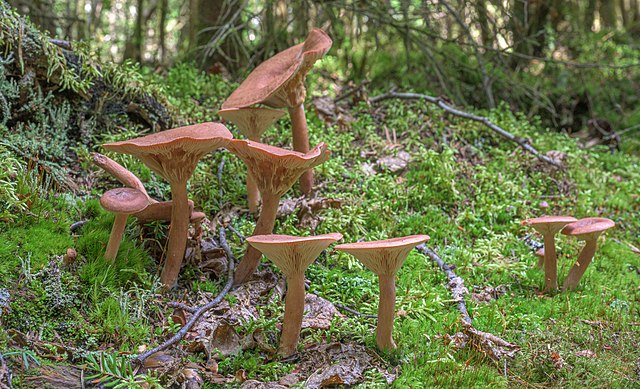
In one legend, Jesus and St Peter walked through a field of rye. Jesus told St Peter not to eat any, but St Peter filched a stalk and chewed on it when Jesus wasn’t looking. Jesus naturally caught St Peter, told him off, and then made him spit out the rye. Mushrooms sprang up where the rye hit the ground, and Jesus decreed they would feed the poor.
In Lithuania, people thought mushrooms were the fingers of Velnias, their god of the dead. He reached up from the underworld to feed the people (Inkwright 2021: 112).
Bioluminescent fungi may be responsible for tales of will-o’-the-wisp. 71 species out of three million do this. Foxfire is the main culprit; it’s not one specific type of fungus, but the name helps differentiate between fungi and marsh gas as the cause of the will-o’-the-wisp. It might be named after foxes in a forest, or it might come from ‘faux’ (French) or ‘fols’ (Old English) (Lawrence 2022: 114). When Californian miners saw bioluminescent fungi on rotten timbers, they called it timber frost, and believed it to be where earlier miners died (Lawrence 2022: 114).
Scientists now believe the fungi glows in the dark to attract insects at night who will spread their spores.
What do we make of this fungi folklore?
It was surprising how many of the mushrooms had common names, but little folklore to go with them. Part of that comes down to mycophobia in the British Isles, and part of it no doubt comes from the lack of attention given to popular beliefs, even in mycophilic countries. I’d be fascinated to read more folklore from countries who love mushrooms.
The general belief that toadstools are poisonous has led people not to create stories about them, since they’re simply something to be avoided.
But it’s clear that despite the folklore, fungi still have a lot of secrets, and a lot to offer to us. Whether they’re enriching their environment, breaking down organic matter, or soaking up radiation, fungi are here to stay. And who knows what other tricks are under their caps?
Do you have a favourite type of fungi?
References
Dartmoor Walks This Way (2013), ‘Fungal Facts & Lichen Lore’, Dartmoor Walks This Way, https://www.dartmoorwalksthisway.co.uk/blog/Fungi-and-Lichen-on-Dartmoor.
Elms, Lorna (2011), ‘The Mushrooms and Toadstools of Drummin Wood’, Our Irish Heritage, https://www.ouririshheritage.org/content/archive/place/miscellaneous-place/the-mushrooms-and-toadstools-of-drummin-wood.
Inkwright, Fez (2021), Botanical Curses and Poisons: The Shadow-Lives of Plants, London: Liminal 11 Press.
Kaplan, Reid W. (1975), ‘The Sacred Mushroom in Scandinavia’, Man, 10 (1), pp. 72–79.
Lawrence, Sandra (2022), The Magic of Mushrooms: Fungi in folklore, superstition and traditional medicine, London: Welbeck.
Wasson, R Gordon and Valentina Pavlovna Wasson (1957), Mushrooms, Russia and History, Vol. 1, New York: Pantheon Books.
Nutty about folklore and want more?
Add your email below and get these posts in your inbox every week.
You'll also get my 5-step guide to protecting your home using folklore!

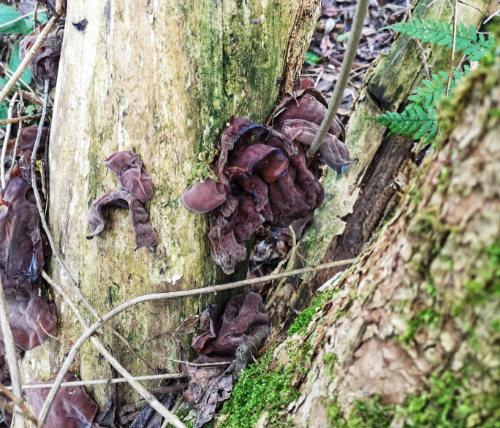
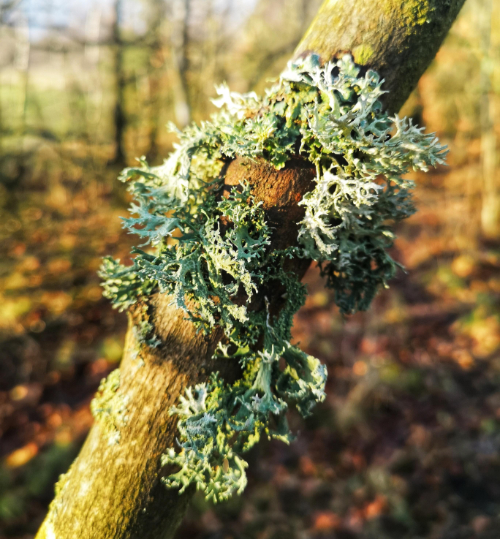
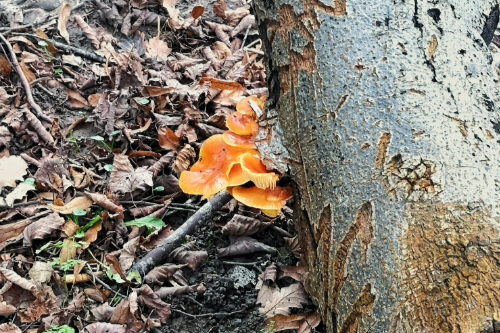
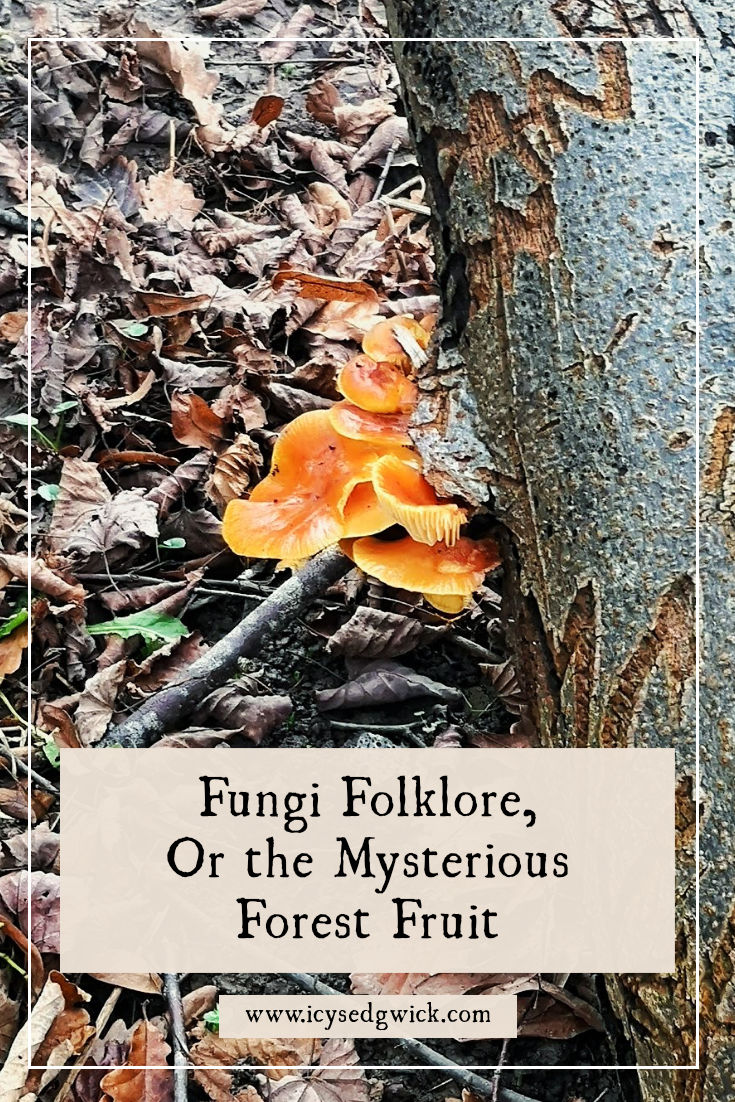





This was fascinating, Icy. I’m very interested in fungi, but only recently started to explore their possibilities. Last fall I found a tiny patch of yellow fungus growing on a tree stump. I took a picture but didn’t harvest it. I went back to get a sample for identification a couple of days later, but it was gone. I think it might have been Witch’s Butter. Hopefully I can confirm that when it regrows.